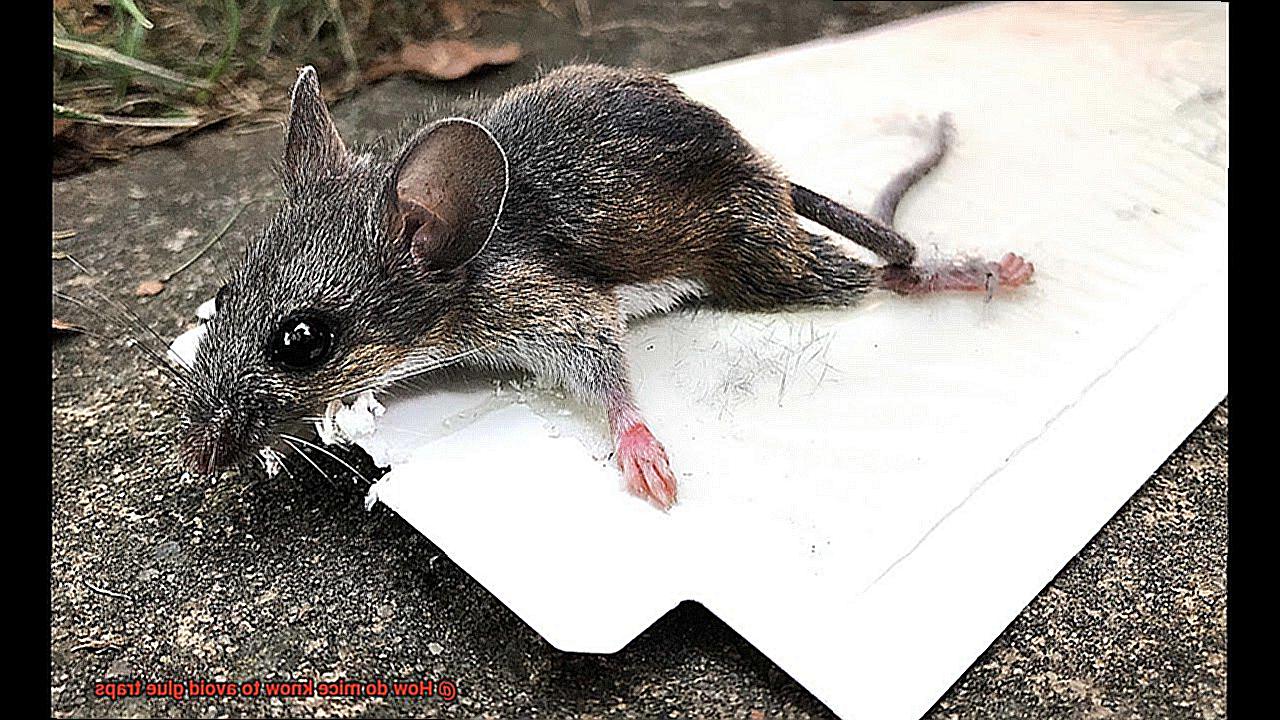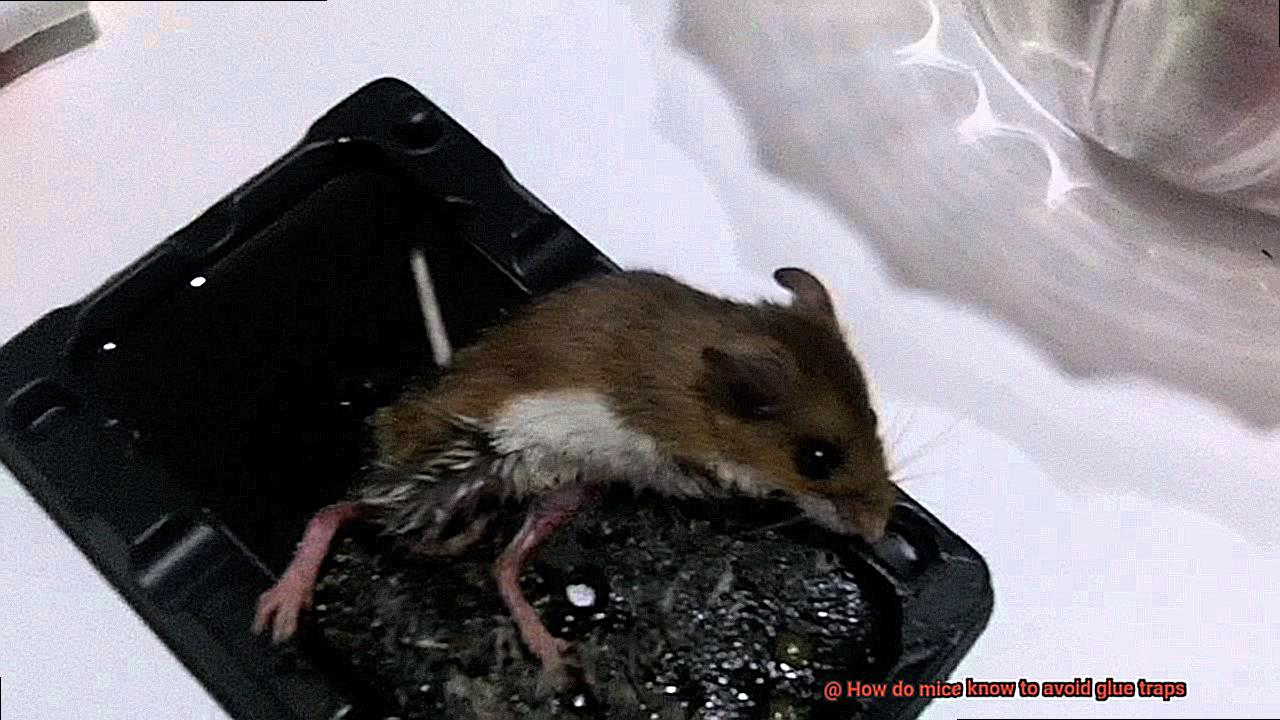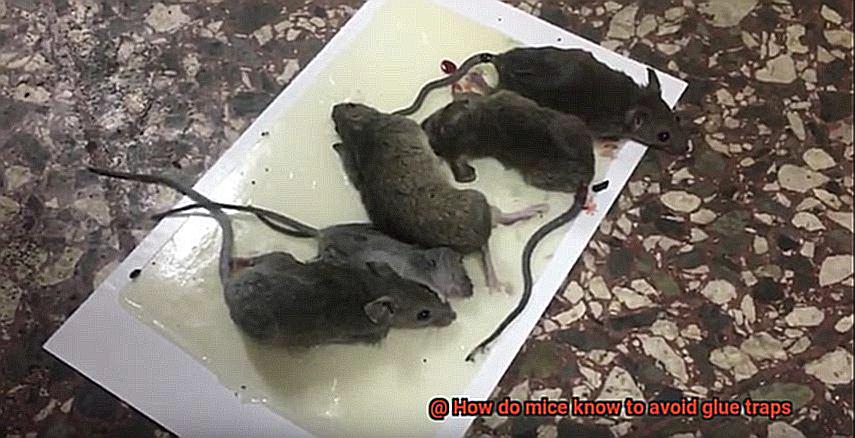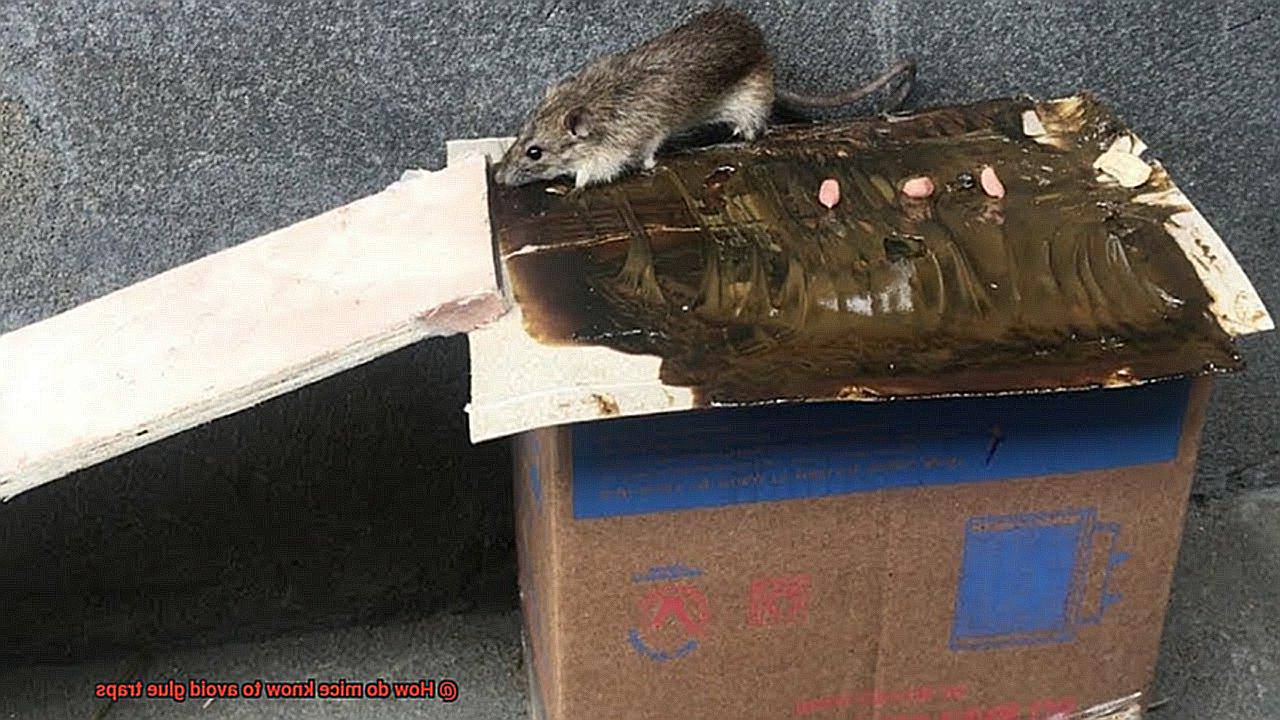Imagine this: you’re battling a mouse invasion in your home, so you set up those sticky glue traps, thinking you’ve got the upper hand. But lo and behold, these crafty little critters manage to slip away, leaving you scratching your head in bewilderment. How on earth do mice possess such a knack for avoiding glue traps?
In this blog post, we dive into the captivating world of mouse behavior and uncover the science behind their uncanny ability to outsmart sticky situations. Get ready to be amazed as we explore the clever tactics employed by these whiskered detectives and discover practical methods to prevent them from wreaking havoc without relying on glue traps.
Understanding how mice think is key to effectively controlling these sneaky rodents. By unraveling their survival instincts, we can gain valuable insights into why traditional sticky traps often fall short in capturing them.
Join us on this enlightening journey as we delve into the factors that contribute to mice’s elusive behavior and uncover ingenious ways to keep them at bay without resorting to glue traps. Let’s outwit these furry troublemakers together.
Mice’s Sense of Smell: How it helps them detect glue traps
Contents
- 1 Mice’s Sense of Smell: How it helps them detect glue traps
- 2 Survival Instincts: Why mice are naturally cautious of new objects
- 3 Tactile Abilities: How their whiskers help them detect danger
- 4 Learning from Experience: How past encounters influence future decisions
- 5 Communication with Other Mice: Spreading awareness through scent markings
- 6 Innate Ability to Detect Substances: The role of chemicals in avoidance behavior
- 7 Prevention Tips: How to reduce the risk of mouse infestations in your home
- 8 Conclusion
Mice possess an extraordinary sense of smell, a vital tool for survival and navigation. In this article, we delve into the intricate ways in which mice utilize their acute olfactory abilities to detect and evade glue traps. Understanding the mechanisms behind their avoidance can aid in developing more effective strategies for rodent control.
The Power of Olfactory Receptors:
Mice boast specialized olfactory receptors within their noses that can detect specific chemical compounds found in glue traps. These receptors possess the remarkable capability to identify and process a vast array of smells, enabling mice to differentiate between scents and make well-informed decisions about approaching certain areas. When the distinct odor of adhesive used in glue traps wafts through the air, mice instinctively recognize it as a potential threat, prompting them to steer clear.
Detecting Other Cues:
Mice not only detect the adhesive itself but also other cues that hint at a glue trap’s presence. They can pick up on scents left by human hands or foreign substances that have come into contact with the trap. This heightened sense of smell allows mice to associate these smells with danger, acting as a deterrent and encouraging them to avoid glue traps altogether.
Survival Instincts and Tactile Abilities:
Naturally cautious and wary creatures, mice possess sensitive whiskers that aid in navigating their surroundings and detecting potential hazards. Should a mouse accidentally come into contact with a glue trap, its sensitive whiskers would immediately sense the sticky texture, triggering an immediate escape response.
Learning from Past Experiences:
Studies indicate that mice learn from past experiences and remember scents or situations linked to danger. If a mouse has previously been ensnared by a glue trap, it is likely to recall the unpleasant encounter and associate the trap with peril. This memory plays a significant role in their subsequent avoidance of glue traps.
Communication among Mice:
Mice communicate through scent marking, leaving behind olfactory signals that convey messages to other mice in the vicinity. If one mouse manages to escape from a glue trap, it may leave behind scent markings that alert others to the danger. This communication helps spread awareness among the mouse population and encourages them to avoid similar traps.
Survival Instincts: Why mice are naturally cautious of new objects
Imagine this scene: you bring home a sleek new piece of furniture, ready to enhance your living space with style. But as you set it down, you catch a glimpse of something curious – your resident mouse scurrying away in fear. Why are these tiny creatures so cautious around new objects? Let’s delve into the captivating realm of mouse behavior and survival instincts to find out.
First and foremost, mice possess an indomitable survival instinct ingrained in their very DNA. Throughout their evolutionary history, they have been prey animals, constantly on high alert for potential dangers. So, when confronted with something unfamiliar in their environment, caution becomes their middle name.
One of their primary methods of assessing the potential threat of a new object lies within their extraordinary senses. Their olfactory prowess, in particular, is remarkably acute and pivotal to their survival. Imagine having the power to detect and recognize the scent of predators or unfamiliar substances – that is the existence of a mouse. When faced with a new object, mice rely on their highly developed sense of smell to determine if it poses any peril.
But it doesn’t end there – mice also possess an astonishing sense of touch. With their delicate whiskers, they deftly navigate and explore their surroundings. When they encounter a new object, like a glue trap, they can feel its sticky surface and immediately discern that it impedes their movement. This tactile information further reinforces their caution, compelling them to avoid such traps at all costs.
Now, here’s where things get even more intriguing. Mice are not solitary adventurers; they are inherently social creatures. They learn from each other’s experiences and observations. If one mouse falls victim to a glue trap, the others swiftly absorb that unfortunate incident and steer clear of similar traps in the future. It’s akin to collective wisdom that aids them in recognizing and evading potential harm.
But that’s not all – mice communicate through scent marking, leaving behind olfactory signals to warn others about the perils of glue traps. It’s as if they possess a secret language that only they can comprehend, helping them navigate their environment safely and avoid sticky situations.

So, the next time you witness a mouse scurrying away from a new object, remember that it’s not just fear guiding their actions; it’s an innate survival instinct at play. These diminutive creatures have evolved to be cautious for good reason – it enables them to stay one step ahead of potential dangers.
Tactile Abilities: How their whiskers help them detect danger
Picture having an inbuilt radar system that can detect danger before it even arrives. Well, mice possess just that – their extraordinary whiskers. These long, stiff hairs on the sides of their face are not merely for aesthetics; they serve a critical purpose in helping mice navigate their environment and evade potential threats. In this blog post, we will explore the fascinating tactile abilities of mice and how their whiskers play a crucial role in identifying dangers in their surroundings.
The Remarkable Whiskers:
Whiskers, also known as vibrissae, are located on a mouse’s face, above their eyes, and around their nose. These whiskers are embedded deep within the skin and connected to a network of nerves and blood vessels, making them highly sensitive to touch and vibrations. They serve as an extension of a mouse’s sense of touch, providing valuable information about the environment.
Sensing Danger:
When exploring their surroundings, mice move their whiskers forward and sideways, brushing them against objects and surfaces. This action allows the whiskers to pick up even the slightest changes in air currents and vibrations caused by nearby objects or movement. The information gathered by the whiskers helps mice create a mental map of their surroundings, enabling them to navigate and avoid potential dangers.
Identifying Glue Traps:
Mice’s whiskers are so sensitive that they can detect sticky surfaces like glue traps. Upon encountering a glue trap, the whiskers immediately send signals to the mouse’s brain, indicating that it should steer clear of that area. This quick detection allows mice to find alternative routes and avoid getting trapped.
Escaping Threats:
The sensitivity of a mouse’s whiskers is extraordinary; they can even detect small gaps or openings through which they can squeeze to escape potential threats. By possessing this ability, mice can quickly find safe routes and avoid perilous situations.
Learning from Experience: How past encounters influence future decisions
Imagine you’re a mouse, scurrying around a cozy home searching for crumbs. Suddenly, you come across a strange contraption—a glue trap. Your instinct kicks in, and you hesitate. You’ve had past experiences with these sticky surfaces, and they haven’t ended well. But why do mice avoid glue traps?

Research has revealed that mice are remarkably intelligent and adaptable creatures. They possess the ability to learn from their experiences and make decisions based on what they have learned. When it comes to glue traps, mice have undergone trial and error, discovering that these sticky surfaces pose a significant threat.
A key factor in their avoidance of glue traps lies in their keen sense of smell. Mice can detect the presence of glue on a trap from a distance, serving as a warning sign to stay away. Additionally, they may catch the scent of other trapped mice, further discouraging them from approaching glue traps.
Mice are social animals, communicating with one another through pheromones. These chemical signals could potentially allow them to detect the distress or warning signals emitted by trapped mice, reinforcing their decision to avoid glue traps.
Furthermore, mice possess remarkable memory capabilities. They remember and recognize specific locations, objects, and experiences. If they have encountered a glue trap in the past and managed to escape or witnessed another mouse being captured, they engrave this negative experience in their memory banks. Consequently, they avoid similar situations in the future.
This avoidance behavior is an instinctual response for survival. Mice have evolved to be cautious and wary of potential threats in their environment, including human-made traps like glue traps. Their excellent spatial memory further aids in identifying potential dangers and avoiding them accordingly.
Communication with Other Mice: Spreading awareness through scent markings
Imagine being a tiny mouse, happily scurrying through a cozy home when suddenly, you come across a glue trap. Your heart skips a beat as you recall the sticky nightmare you narrowly escaped before. But have you ever wondered how mice manage to avoid these treacherous traps? The answer lies in their incredible communication skills and keen sense of smell.
The Power of Scent Markings:
Mice possess an extraordinary sense of smell and use scent markings, known as pheromones, to communicate with other mice in their environment. These pheromones are secreted by various glands in their bodies, including the sebaceous glands on their skin and the urinary glands in their urine. When a mouse encounters a glue trap or any other potential danger, it releases specific pheromones to warn others nearby.
Warning Pheromones:
The pheromones released by a mouse encountering a glue trap act as an alarm system, signaling danger and prompting other mice to stay away. It’s like a red flag waving in the air, warning them to steer clear of the sticky trap that spells trouble.
Detecting Danger:
Other mice detect these warning pheromones through their olfactory receptors. They can identify the presence of a threat and adjust their behavior accordingly. This remarkable ability allows mice to navigate their environment safely and avoid potential dangers like glue traps.
Beyond Glue Traps:
In addition to warning pheromones, mice use various types of scent markings for different purposes. They mark territories, communicate mating signals, and establish social bonding cues. These scent markings help them establish boundaries, attract mates, and maintain social relationships within their communities.
The Role of Memory:
Mice possess exceptional memory capabilities that further aid them in avoiding glue traps. If they’ve encountered a glue trap before or witnessed another mouse’s unfortunate fate, they remember the experience with incredible precision.
This negative experience ingrains caution and wariness, ensuring that they do everything possible to avoid similar situations in the future.

Innate Ability to Detect Substances: The role of chemicals in avoidance behavior
Their innate ability to detect substances and chemicals plays a significant role in their avoidance behavior. In this article, we will explore the fascinating mechanisms behind mice’s reactions to chemicals, particularly those found in glue traps. So, grab a cup of coffee and let’s dive in.
The Power of Their Sniffer:
Mice possess an extraordinary sense of smell due to their highly sensitive olfactory systems. This heightened sense allows them to detect and differentiate between various scents, including the distinct odor emitted by adhesive substances found on glue traps.
Chemical Signals:
The specific chemicals present in the adhesive release volatile organic compounds (VOCs), which act as chemical signals that alert mice to the presence of a glue trap. These VOCs serve as a neon sign saying, “Danger. Stay away.” to our furry friends.
Aversion to Certain Compounds:
Studies have shown that mice have an innate aversion to certain chemical compounds commonly found in adhesives, such as polyvinyl acetate. Research conducted at the University of California, Berkeley revealed that mice consistently chose paths without adhesive when given a choice between a glue trap and a neutral substance.
Learn from Experience:
While innate chemical detection is crucial for mice’s avoidance behavior, previous experiences or learned associations also play a role. If a mouse has had an unpleasant encounter with a glue trap before, it may develop an aversion based on the memory of that experience.
The Power of Other Senses:
Mice rely not only on their sense of smell but also on other sensory cues to detect potential threats or dangers. With their excellent hearing, they can pick up high-frequency sounds that humans cannot hear. Additionally, their sensitive whiskers, known as vibrissae, help them navigate and avoid obstacles.
Prevention Tips: How to reduce the risk of mouse infestations in your home
These tiny critters can be a nuisance, causing messes and potentially spreading diseases. Fortunately, there are several effective steps you can take to prevent mouse infestations and keep your home rodent-free. Read on to discover five essential tips that will help you reduce the risk of mouse infestations in your home.
Maintain Cleanliness:
Mice are attracted to food sources, so it’s crucial to keep your home clean and tidy. Regularly sweep and mop the floors, wipe down countertops, and ensure there are no crumbs or spilled food lying around. Store your food in tightly sealed containers to deny mice easy access.
Seal Off Entry Points:
Mice can squeeze through tiny openings, so it’s essential to seal any potential entry points in your home. Inspect your walls, windows, doors, and foundation for cracks or gaps. Use caulk or weatherstripping to seal these openings effectively. Don’t forget to pay attention to areas where utility pipes enter your home – mice can sneak through those too.
Eliminate Outdoor Attractants:
Mice are also attracted to outdoor food sources like bird feeders or pet food left outside. Clean up any spilled birdseed or pet food promptly and store them in secure containers. Trim back overgrown vegetation around your home that may provide hiding spots for mice.

Secure Garbage:
Mice are sneaky scavengers, always on the lookout for a free meal. Keep your garbage cans tightly sealed with lids that mice can’t easily open. Avoid leaving bags of trash outside for too long – it’s like an open invitation for them.
Declutter Your Space:
Mice love hiding in cluttered areas where they can build cozy nests undisturbed. Keep your home organized and free of unnecessary clutter, especially in storage areas like basements, attics, and garages. Regularly check these spots for any signs of mice, like droppings or chewed items.
MGbH2dzR1Y0″ >
Conclusion
In conclusion, mice possess extraordinary instincts and sensory abilities that allow them to steer clear of the dreaded glue traps. Their sense of smell is nothing short of remarkable, thanks to their specialized olfactory receptors. These receptors enable them to detect the pungent aroma of adhesive used in glue traps from a considerable distance away. But it doesn’t stop there.
Mice also rely on their keen tactile abilities and survival instincts to avoid falling into the clutches of sticky doom. Their whiskers serve as their trusty guides, helping them navigate their surroundings and identify potential hazards like the treacherous texture of a glue trap. And let’s not forget about their memory – these little critters are quick learners who remember scents and situations associated with danger. If a mouse has ever had an unpleasant encounter with a glue trap before, you can bet it will recall that experience and steer clear of similar traps in the future.
But it’s not just individual mice looking out for themselves; they have an impressive network of communication through scent marking. This collective wisdom spreads awareness about the perils of glue traps among the entire mouse population, ensuring that everyone stays one step ahead of potential threats.
To effectively control mice without resorting to glue traps, it’s crucial to understand their behavior and take preventative measures. Keep your living spaces clean and tidy, seal off any entry points where these sneaky rodents might try to squeeze through, eliminate outdoor temptations that might attract them, secure your garbage cans tightly, and declutter your surroundings. By taking these practical steps, we can outsmart these crafty critters while keeping our homes free from furry troublemakers.
So let’s work together – armed with knowledge about how mice think and employing strategic rodent control methods – to protect our homes from unwanted guests without relying on those sticky traps.





